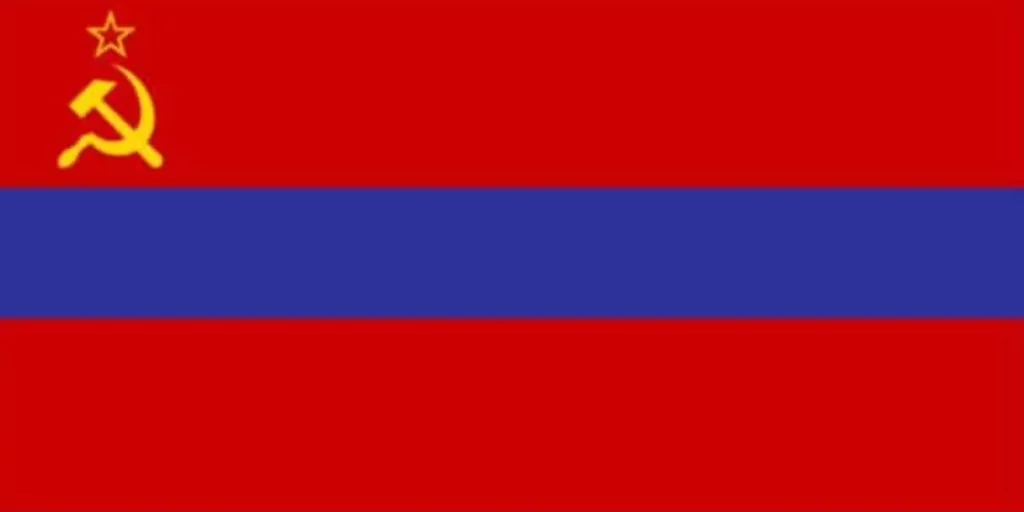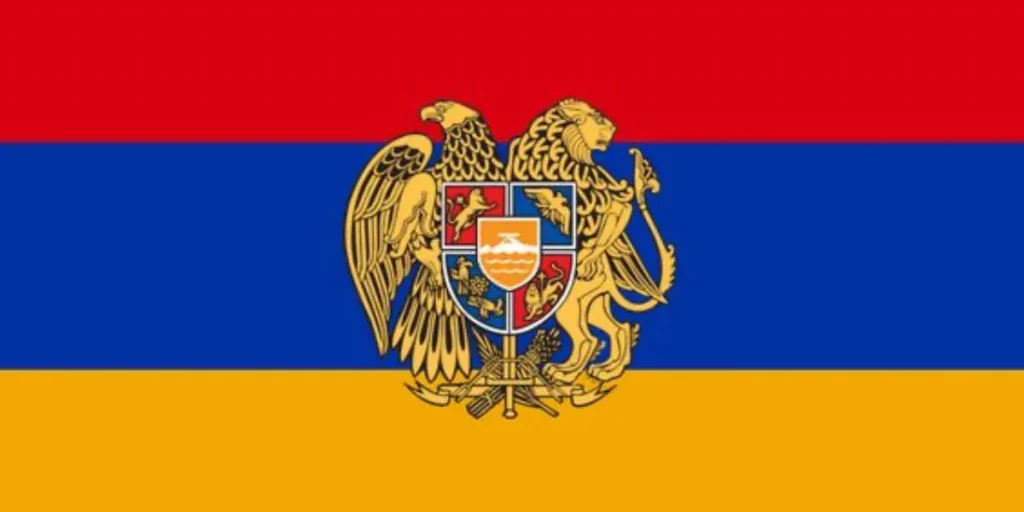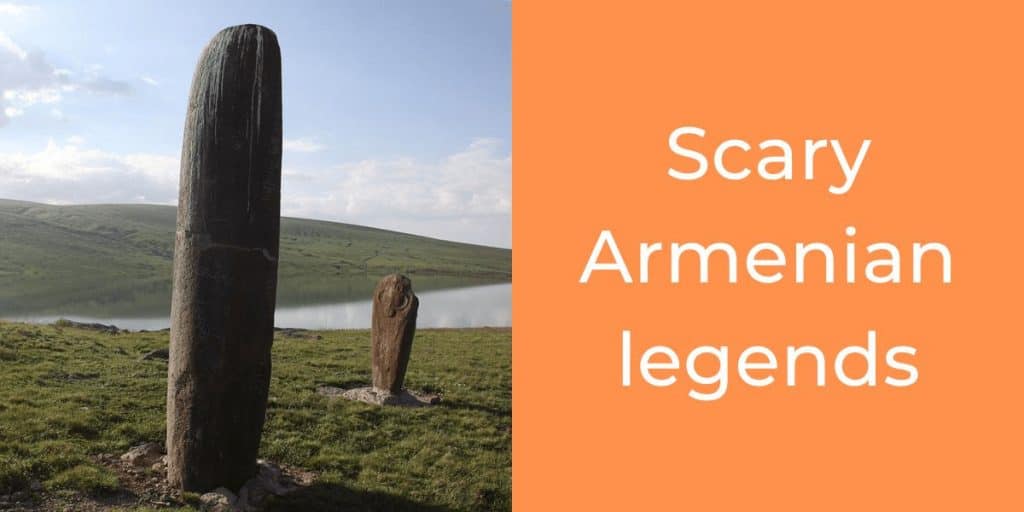Armenian flag history is as old as the history of the nation itself. With its striking colors and meaningful symbolism, the Armenian flag is a true reflection of the unity my people put together over centuries. So, let’s make a journey into Armenian flag history together and learn more about how the Armenian flag evolved over time.
The origins of the Armenian flag can be traced back to ancient times, with historical events, and according to some legends even divine inspiration, influencing its tricolor design. Throughout history, different ruling powers gave rise to various flags of the Armenian people. However, the modern flag of independent Armenia was first designed in 1918 for the First Armenian Republic. Later it was re-adopted in 1991 by the modern-day Republic of Armenia. Today, the flag stands as a symbol of national pride and unity.
Let’s dive into the Armenian flag history deeper. And if you care about Armenian history and want to share some insights, please ping me on Twitter or Instagram with #ArmeniaTravelTips.

Origins of the Armenian Flag
The present-day flag was officially recognized as the national symbol only with the establishment of the First Armenian Republic of 1918. As we trace the origins of the Armenian flag, we find that it is not just a modern creation. The present-day tricolor Armenian flag is deeply rooted in the nation’s ancient history. Some believe that the tricolor combination of red, blue, and orange originates from the colors of the historic Armenian Kingdom of Cilicia.
There are some legends about the flag’s color. One of those legends says that it was the vision of Haik Nahapet, the legendary patriarch of the Armenian people. A legend tells that Haik Nahapet had a dream in which the future of Armenia was represented by red, blue, and orange colors. According to this tale, this divine revelation inspired the Armenian people and they embraced the tricolor as a symbol of their national identity.
Another legend tells that Vartan Mamikonian, the leader of the Armenian army during the Battle of Avarayr in 451 AD, was said to have wrapped the bodies of dead soldiers in red, blue, and orange clothes. These colors later became the foundation of the Armenian flag, symbolizing the Armenian people’s courage, peace, and resilience.
Commonly accepted meaning of the Armenian flag colors
The Armenian flag is tricolor, with the common three-band design on it. The red band symbolizes the Armenian Highland and the striving of the Armenian people for freedom. The middle band is a deep azure blue signifying the aspiration for peace and tranquility. And the warm orange bottom band symbolizes the creativity and industriousness of Armenians. The constitution of the Republic of Armenian officially defines the symbolic meaning of these colors.
Evolution of the Armenian flag over time
Middle ages
After the Sasanian period (428-636), Armenians came under the control of the Umayya Caliphate and formed an autonomous principality recognized by the Caliph and the Byzantine Emperor. The principality, or the emirate, received a flag which was dark cloth without additional elements on it as far as we know.
In 885, Armenia gained independence. The national flag was a dark red canvas and there was an image of a white leopard together with a cross on it. Now the “Ani leopard” from this flag is on the coat of arms and the flag of Gyumri, the second largest city of Armenia.
In 1080, the Kingdom of Cilicia was founded. And since its royal dynasties had dynastic flags of their own, those became the flags representing the Armenian people.
After that, once Persia and Ottoman Empire divided Armenia, naturally there was no flag of Armenia. But in 1885, the Armenian Students Association of Parisa requested to design a flag . According to historians they wanted to attend the funeral of Victor Hugo holding the national flag of Armenia, but they didn’t know what it should look like. So, they asked a church clerk, Father Alishan, for her. He came up with three stripes – red, green and white – deriving them from the names of the “Red” and “Green” Sundays of Easter. This flag never got any form of international recognition though.

The flag of the First Armenian Republic
Finally, after many centuries of loss of sovereignty, Armenians established statehood in 1920 and had their own flag. The flag of the First Armenian Republic is a testament to the unbreakable spirit of a nation that fought to reclaim its independence after centuries of foreign rule. On May 28, 1918, the Armenian National Council declared the establishment of the First Armenian Republic. It was then that the present-day flag was adopted as the symbol of the identity of the Armenian people. Today we use this flag again, but it wasn’t a linear journey.
Despite its brief life, the First Armenian Republic was a significant period for the identity of Armenians from 1918 to 1920. During those two years, the Armenian people once again had a taste of nationhood. However, due to threats from the Ottoman Empire and the encroaching occupation by the Soviet Red Army, the First Armenian Republic fell in 1920. And with it, also our ability to use our tricolor.

The flag of Soviet Armenia
In 1922, Armenia was taken over by the Soviets and it was forced to join Georgia and Azerbaijan to form the Trans-Caucasian Soviet Federative Socialist Republic (TSFSR). TSFSR had its own flag, similar to that of the Soviet Union, but since it didn’t represent Armenians specifically I’m not going to focus on it too much. The TSFSR didn’t exist for too long anyway. It dissolved in 1936 and Armenia became one of the republics of the Soviet Union.
The Armenian SSR properly adopted its first Soviet flag in 1936, after the dissolution of the TSFSR. It resembled the Soviet Union’s flag with a red background, a yellow hammer and sickle in the corner and an abbreviation of “Armenian Soviet Socialist Republic” in Western Armenian, for some strange reason. It really didn’t make sense if you think about it, because the majority of people living in Soviet Armenia spoke the Eastern Armenian dialect. Btw, if you want to learn more about the differences between the two dialects of Armenian, check out this post.
Back to the flag. In the 1940s, they have modified the to use Eastern Armenian in the abbreviation of the republic’s name. In 1952, a new flag emerged, it dropped the above-mentioned abbreviation and they introduced a horizontal blue stripe. This flag remained in use until 1990.

The modern flag of independent Armenia
Amid the rising independence movement in 1988, the banned tricolor of the First Armenian Republic was allowed to fly in Yerevan again. This was a popular move by the local authorities, as it turned out. So, on 24 August 1990 this tricolor replaced the 1952 Soviet Armenia flag. As a result, Armenia declared its formal independence from the USSR officially embracing the tricolor of the First Armenian Republic in 1991.
So, it’s clear that in the past two centuries, the Armenian tricolor played a huge symbolic role in my people’s struggle for statehood and independence. Not once, but twice! Therefore, I think it’s quite understandable that today our three stripes mean a lot to us, representing our values of freedom and self-determination. We even have a flag day in Armenia! Armenians celebrate it on June 15th, and it has been an official public holiday since 2006 when the National Assembly passed the law on the National Flag of the Republic of Armenia.
Modern Armenian flag: with or without coat of arms?
Sometimes the version of flag is confusing. In reality, they can use the Armenian flag both with or without the Coat of Arms of Armenia on it. In official and formal settings, such as government buildings, diplomatic events etc., they use the Armenian flag with its coat of arms. This helps to signify the official status of the flag in that context.
On the other hand, in more casual or non-official contexts, such as during public gatherings, sports events, cultural festivals, and other public occasions, they may use the flag without the coat of arms. They have designed this simplified version of the flag to be recognizable at a distance even without the intricate details of the Coat of Arms.

International recognition and use of the Armenian flag
Half a year after gaining independence from the USSR, on 2 March 1992, Armenia joined the United Nations. Since then, the Armenian tricolor flag proudly flies among other UN member flags and the international community therefore recognizes it. The only country in the world that technically doesn’t recognize our flag, because it doesn’t recognize Armenia as a country in the first place, is Pakistan. This is due to certain political disputes, which I’m not going to discuss in detail here.
Beyond Armenia, our flag shines on the global stage during international events and competitions. Our embassies, consulates, and visiting diplomats proudly wave it in accordance with international laws and traditions. Not to mention, you might spot Armenian flags popping up at Armenian restaurants, churches, and schools abroad. The widespread Armenian diaspora also uses the flag to connect with their historic homeland. Btw, I have a full post dedicated to the fascinating topic of how the Armenian diaspora came to be so widespread.
In Armenia, our flag proudly flies atop government buildings, public institutions, and even at the entrance to schools and universities. Businesses and individuals also sometimes join in, displaying the Armenian flag here and there. Though not mandatory, the government highly encouraged it. During major events, flags beautifully adorn the central streets of Armenian cities. So, if you visit, for example, between March 8th and May 28th, get ready to be visually dazzled by the abundance of flags celebrating 5 different public holidays!

Rules: how to display the Armenian flag
The law “On the National Flag of Armenia”, adopted in 2006, defines some pretty strict rules for hoisting the flag of Armenia. And yes, it’s true that you may see some flags hanging incorrectly at some bars, for example when pub crawling in Yerevan, it’s good to know the basic rules of flag etiquette.
- The law doesn’t define the flag’s size but the width-to-length ratio must be 1:2,
- The raised flag should be complete, clean, and not pale or worn off,
- The bottom of the flag must be at least 2.5 meters above the ground,
- If they raise the flag on a flagstaff, the latter must be at least 1.7 times longer than the flag itself,
- When they raise the flag vertically, its colors (red, blue, and orange) should maintain their sequence from left to right. (this is probably the most common mistake!)
And here is a cool one: at night, after sunset, they must illuminate the flag. 🙂 This is literally a law in Armenia. So, if you ever decide to hang our flag somewhere, keep these rules in mind. 😉
Conclusion
The Armenian flag history goes way back into history, although in its current form, it had its first debut only in 1918. From ancient ruling dynasties to the times of the First Armenian Republic, we’ve been cherishing our love and attachment to our national symbols, of which a flag is certainly one. Ancient times, epic legends influence our flag design, and maybe even a sprinkle of divine inspiration! And it’s not surprising that we love hoisting it for various events. Oh, and our diaspora – they spread our flag love all over the globe! So, next time you spot the Armenian flag, give it a little nod of respect. For us, it’s a symbol of unity, resilience, and pure awesomeness! And if you like reading about Armenian culture follow that link to learn more. Finally, if you enjoyed reading this post, let me know on Twitter or Instagram with #ArmeniaTravelTips. Cheers!
Featured image credit: Photo by Rafael Ishkhanyan on Unsplash
Please help me make Armenia more popular!





